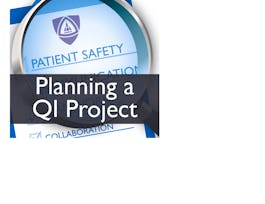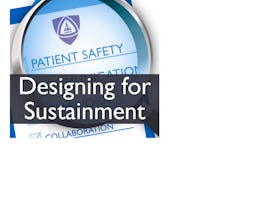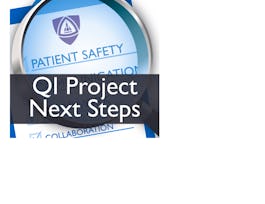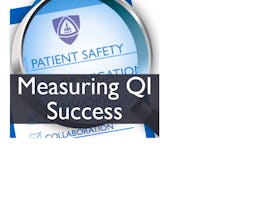Safety culture is a facet of organizational culture that captures attitudes, beliefs, perceptions, and values about safety. A culture of safety is essential in high reliability organizations and is a critical mechanism for the delivery of safe and high-quality care. It requires a strong commitment from leadership and staff. In this course, a safe culture is promoted through the use of identifying and reporting patient safety hazards, accountability and transparency, involvement with patients and families, and effective teamwork.


Setting the Stage for Success: An Eye on Safety Culture and Teamwork (Patient Safety II)
This course is part of Patient Safety Specialization
Taught in English
Some content may not be translated

Instructor: Eileen Kasda
8,840 already enrolled
Included with 
Course
(415 reviews)
94%
What you'll learn
Review essential elements of a safety culture.
Describe how healthcare organizations identify and mitigate safety hazards.
Identify how patients and family members contribute to developing a safety culture.
Identify strategies for improving communication and teamwork .
Skills you'll gain
Details to know

Add to your LinkedIn profile
4 quizzes
Course
(415 reviews)
94%
See how employees at top companies are mastering in-demand skills

Build your subject-matter expertise
- Learn new concepts from industry experts
- Gain a foundational understanding of a subject or tool
- Develop job-relevant skills with hands-on projects
- Earn a shareable career certificate


Earn a career certificate
Add this credential to your LinkedIn profile, resume, or CV
Share it on social media and in your performance review

There are 4 modules in this course
In this module, learners will develop an understanding of what safety culture is and why it matters, how safety culture influences outcomes, how culture is assessed, and how strategies for improvement can be developed. Learners will become familiar with the Just Culture model and how it is used when appropriating blame and accountability for human error, at risk behaviors, and reckless behaviors.
What's included
6 videos2 readings1 quiz
The patient experience encompasses a range of interactions patients have with the healthcare system. Understanding patients' expectations and learning from their experiences is key to designing safer care delivery systems and providing patient and family-centered care.
What's included
6 videos4 readings1 quiz
Patient safety event reports are a critical data source for identifying and mitigating harm in high reliability organizations; yet, many healthcare organizations do not take full advantage of this data. At the conclusion of this module, learners will understand how event reports should be used to design safer care systems and how organizations can provide support to staff involved in medical errors.
What's included
12 videos2 readings1 quiz1 discussion prompt
Research shows that many errors can be attributed to breakdowns in teamwork and communication. In this module, participants will learn how safety culture can be strengthened though teamwork and communication. Participants will learn skills critical in the prevention and mitigation of medical errors.
What's included
8 videos3 readings1 quiz
Instructor

Offered by
Recommended if you're interested in Healthcare Management

Johns Hopkins University

Johns Hopkins University

Johns Hopkins University

Johns Hopkins University
Why people choose Coursera for their career




Learner reviews
Showing 3 of 415
415 reviews
- 5 stars
81.68%
- 4 stars
17.10%
- 3 stars
0.48%
- 2 stars
0%
- 1 star
0.72%
New to Healthcare Management? Start here.

Open new doors with Coursera Plus
Unlimited access to 7,000+ world-class courses, hands-on projects, and job-ready certificate programs - all included in your subscription
Advance your career with an online degree
Earn a degree from world-class universities - 100% online
Join over 3,400 global companies that choose Coursera for Business
Upskill your employees to excel in the digital economy
Frequently asked questions
Access to lectures and assignments depends on your type of enrollment. If you take a course in audit mode, you will be able to see most course materials for free. To access graded assignments and to earn a Certificate, you will need to purchase the Certificate experience, during or after your audit. If you don't see the audit option:
The course may not offer an audit option. You can try a Free Trial instead, or apply for Financial Aid.
The course may offer 'Full Course, No Certificate' instead. This option lets you see all course materials, submit required assessments, and get a final grade. This also means that you will not be able to purchase a Certificate experience.
When you enroll in the course, you get access to all of the courses in the Specialization, and you earn a certificate when you complete the work. Your electronic Certificate will be added to your Accomplishments page - from there, you can print your Certificate or add it to your LinkedIn profile. If you only want to read and view the course content, you can audit the course for free.
If you subscribed, you get a 7-day free trial during which you can cancel at no penalty. After that, we don’t give refunds, but you can cancel your subscription at any time. See our full refund policy.

